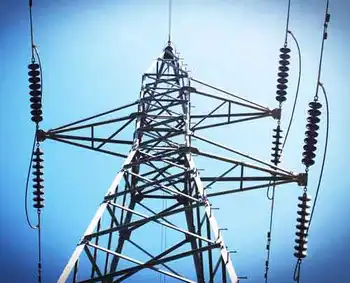Ontario pours millions into power grid technologies
Ontario Premier Dalton McGuinty, for example, has frequently trumpeted the Green Energy Act over the past few weeks. The full details of the plan likely won’t be released until later in the month, but the premier’s comments so far show the province intends to invest significantly in renewable energy, promising to create more than 50,000 jobs over the next three years. The province also intends to boost spending on smart grid initiatives — kind of a catch-all phrase to describe new technologies that allow for more efficient distribution and management of electricity use.
Ontario is already somewhat of a leader in Canada in both regards. The government implemented a feed-in tariff in 2006 to encourage the development of wind, solar and biomass power. It has also mandated that each utility provide smart meters to residential and small business customers by the end of 2010 to allow them to better manage their electricity use and save money as a result.
But when it comes to developing a smart grid, meters are just a start. The Ontario Smart Grid Forum, a group of representatives from industry, the Ontario Energy Board and the Ministry of Energy and Infrastructure, issued a report earlier this month outlining the necessary measures to improve the provinceÂ’s electricity grid. Costs are difficult to estimate, according to the report, but the Forum projects spending would average $320 million over the first five years.
That amounts to more than $1.6 billion — a steep sum. The federal budget, by comparison, allocated $1 billion for a green infrastructure fund, and though the term “smart grid” wasn’t explicitly used, some of that money will be used for “modern energy transmission lines.” More details were not provided. But there are plenty of reasons to justify spending $1.6 billion in Ontario, according to the Forum.
For one, the grid needs to be upgraded in order to accommodate renewable energy. New infrastructure will be needed to connect these sources to the grid, but renewable energy presents a unique challenge in that the wind and the sun are not entirely predictable, and so the levels of electricity generated will vary. Better intelligence is needed to anticipate when renewable power is going to drop off, allowing other sources to feed the grid during those times. There are also more sources of generation with renewable power, as opposed to the large, centralized power plants that exist today, including the potential for rooftop solar. Smart grid technology can allow households to sell any excess power back to the grid.
Electric vehicles present more challenges for the province’s electricity system. They create a substantial new demand for electricity and the Forum notes new methods must be developed to maximize available energy resources, and to provide new “peaking” resources when additional electricity is needed to meet very high demand. Without these technologies, “the grid may be a barrier to the widespread adoption of electric vehicles,” according to the report.
There are more changes to the electricity grid coming, too, such as complete home energy management systems to allow consumers to better monitor their electricity use. Google is testing a system called PowerMeter that provides users with information about their home electricity consumption online. (Currently, the program is limited to Google employees).
The Smart Grid Forum admits a lot of uncertainty still surrounds such technologies. Much of the work is in the developments stages and the costs of operating on a commercial scale are still in question. But when energy is an increasingly costly commodity whose environmental impact is under intense scrutiny, investing now in technologies that help to distribute and manage electricity use more efficiently could pay off in the long run.
Related News

A Texas-Sized Gas-for-Electricity Swap
DALLAS - What would happen if you converted all the single-family homes in Texas from natural gas to electric heating?
According to a paper from Pecan Street, an Austin-based energy research organization, the transition would reduce climate-warming pollution, save Texas households up to $452 annually on their utility bills, and flip the state from a summer-peaking to a winter-peaking system. And that winter peak would be “nothing the grid couldn’t evolve to handle,” according to co-author Joshua Rhodes.
The report stems from the reality that buildings must be part of any comprehensive climate action plan.
“If we do want to decarbonize, eventually we…





